When you go to a monument, whether it’s a temple, a fort, a cave, a maqbara or a palace, what is it you notice first? The grandeur of the building, the intricacy of the architecture, the glory of the paintings and sculptures? Perhaps, the stories told by the guides enliven your imagination. You might buy a souvenir or two. Do you ever notice the things etched on the walls and floors, the graffiti of a time bygone?
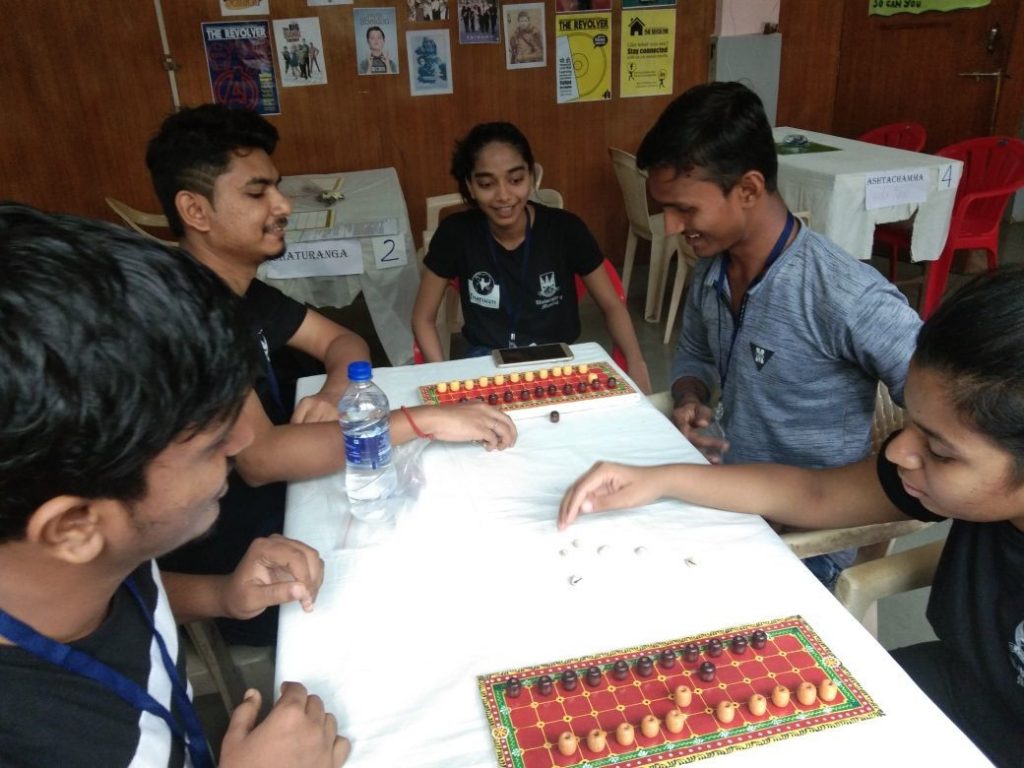
A statement to its builder
Each monument is a statement of its builder, an attempt to leave a stamp on the face of the earth. Many carry the words “Yavat Chandra Sūrya virāje”( where the Moon and Sun reside), even if all that is left is a picturesque ruin, sometimes surrounded by an impeccably manicured ASI (Archaeological Survey of India) lawn. However, over time, some monuments become a living entity, a part of the social life of those who live in and around it, becoming modified, sometimes even pulled down and reconstructed (jīrṇōddhār). Each generation of people leave their stamp on it, as inscriptions, sculptures, etchings, and board games. Art historians have paid attention to the middle two, for the etchings of animals and birds and other motifs. The making of sculptures in the walls talk of the evolution of both aesthetics and art. Epigraphists read inscriptions and can tell us not just the text, but also its context. Indeed, much of India’s history has been worked out through inscriptions. However, the board games have sadly been neglected.
Today, however, the study of inscriptions (epigraphy) has suffered a sharp decline. Society places lesser value on the arts as against ‘earning’ subjects like law and engineering, so the brightest do not take up subjects like history or philosophy. Those who do, are drawn understandably to the ability of ‘monetising’ this knowledge through tourism and conservation. The last great epigraphist of this country was possibly my near-namesake K. V. Ramesh (1935-2013). Dedicated jobs in epigraphy probably no longer exist (except in ASI), and many archaeologists who double up as epigraphists, have too little time for it. As for board games, they are dismissed as, well, ‘games’.
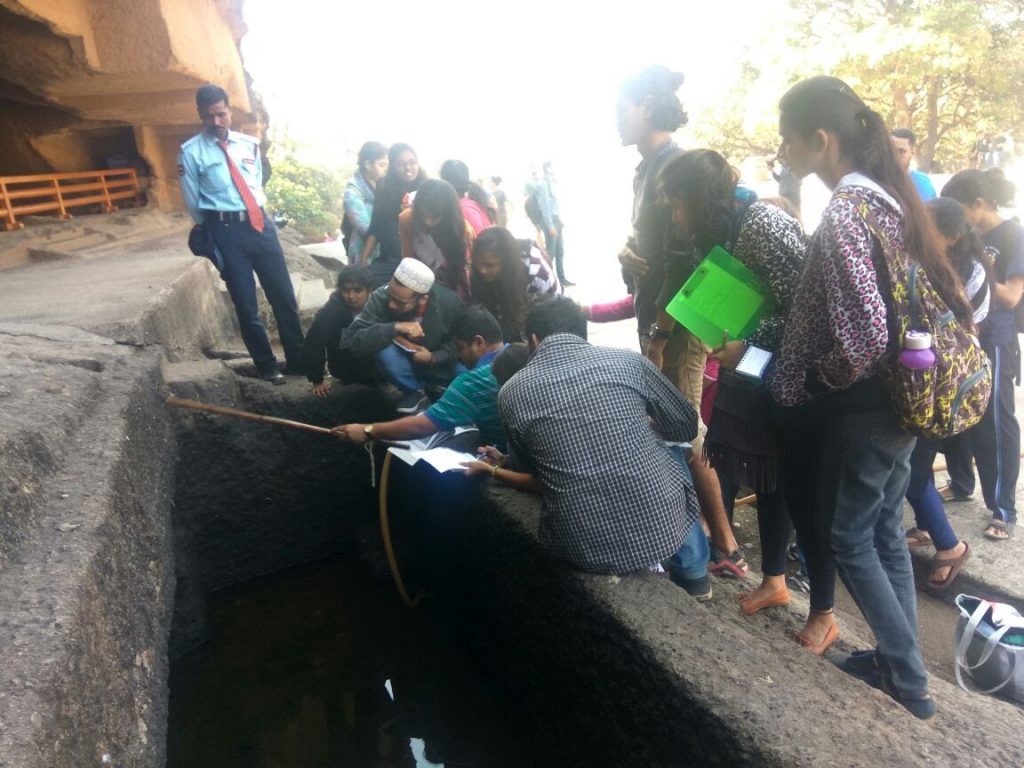
Scripting a revival
For an inscription, knowing the language and the script makes it come alive. You can then say that the stone literally spoke to you and revealed its secret. A number of institutions have realised that the knowledge to read them is now vanishing. Very soon, they will become mere etchings on a wall, that tourists pass by without even a glance, or at worse, leave their own inscription on them, saying “Pappu loves Bindu”, or some such thing. .
Luckily for us, the hardwork of deciphering the scripts and arranging them according to eras has been done by the greats before us. All we need to do is teach the script; for that is the intangible part of an inscription. Without knowing the relationships of the letters, we cannot form words and sentences. The straightforward way to do it is to teach the letters, make some words, read some short inscriptions, and hope some of this sticks in the head. Without knowing the relationships of the letters, we cannot form words and sentences. The straightforward way to do it is to teach the letters, make some words, read some short inscriptions, and hope some of this sticks in the head. I tried that the first time I started teaching ancient scripts, and realised how inadequate that was.
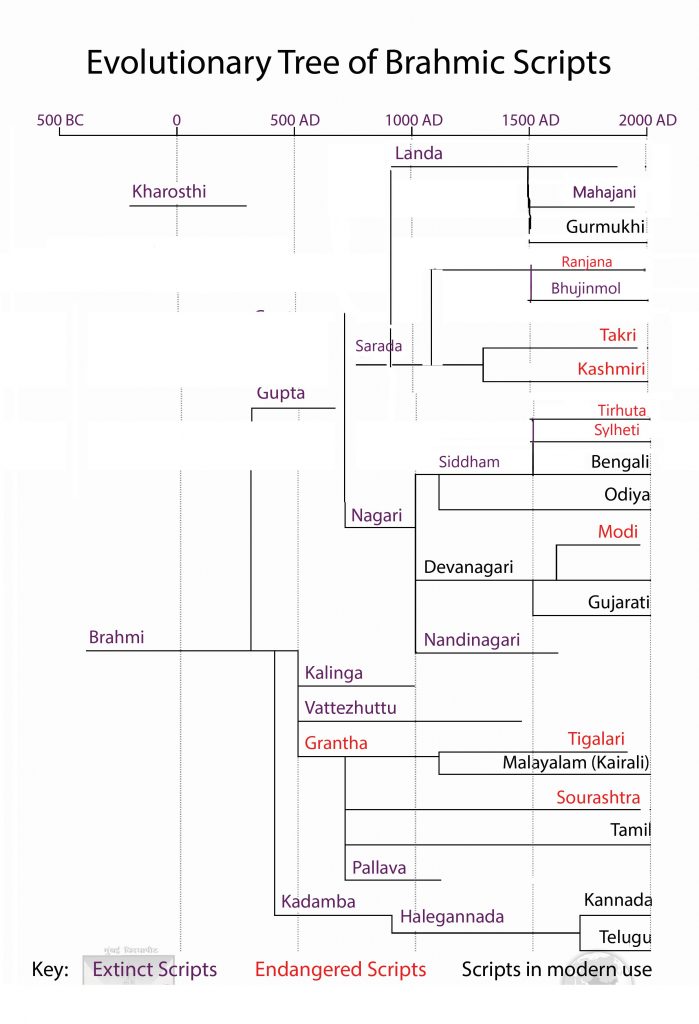
The next attempt was teaching the letters, but making words as you go along. Nonsense words like Aaoo, which everyone recognises as Shakti Kapoor’s trademark. And some coined words to describe things that had no Indian names: like dhoomrapanadandika (cigarette) or lohapatgamini aavakjaaavak soochak stambh (railway signal). It got the class rolling on the floor laughing, but this too had its limitations.
My third attempt was to use word games along with humour. This turned out to be not only fun, but a big hit with young students who are very competitive and innovative. I began with well-known games like Scrabble and Boggle. Here’s how a typical class went:
1). Divide the class into teams and promise them candy for every word they come up with.
2). Draw the ‘board’ on the blackboard, usually just blank squares in chalk.
3). Each team gets it hand-out of the alphabet and the vowel signs (mātra).
4). They begin with simple two-akshara words like ‘mama’, ‘kaka’ and ‘dada’, and go on to make complex words.
5). Each team took turns to walk to the blackboard and form their word, using a letter from a previous word.
6). Longer words get disproportionately more points (so two marks for two-akshara words like Mātā, But 10 points for Bhārata and 50 for Mahāvishnu).
At some point, the game would lose its formality, and turn into a crossword of sorts, with teams militantly making Sanskrit words, and even physically fighting for the chalk. I would soon get words like Rnanubaddha (debt-ridden), and aggressive tricks. Adding Mahā- to any word is a popular trick, so Devi (2 points) becomes Mahādevi (50 points) and so forth. Teams would station a representative permanently near the board. But it all ended amicably with a sharing of candy. I have now taught scripts like Brahmi, Kharosthi, Modi and Halegannada in this way at several colleges. And I’m always on the look-out for more pedagogic games.
Studying the games
The study of games and their history and sociology has been a neglected field in India, barring a few scholars like V. Balambal and S. Y. Wakankar, whose work is not widely known. Almost all of the research done is by Western authors like Irving Finkel of the British Museum.
You might be astonished to hear that India has over 100 board games, not counting field games like Laghōrī or recreational games like Phugdī. Some games are played in nearly the same way in all the states, like Ashtachamma (but with different names), while others like ‘Tiger and Goat’ change both in rules and names from region to region. I was also surprised to discover that many games played the world over, like chess, snakes and ladders, ludo, backgammon and carrom, are actually of Indian origin! Chess, which is called the King of Games and the Game of Kings, was probably invented in a royal court in the Gupta period, as the game of ‘Chaturanga’. Similarly, Pachīsī (or Chaupar) was a Mughal favourite, which is now sold commercially as the simplified Ludo, now going crazily viral as a mobile-phone app. Snakes and ladders was invented by Jain munis (saints), perhaps a 1000 years ago, as a way to teach young people about karma and dharma, pāpa (snakes) and puṇya (ladders).
At the Centre for Extra-Mural Sciences, I joined a few ex-classmates and colleagues to launch an Ancient Games Weekend in June 2018. We wanted to popularise the games, but also educate people on how to make them. Unlike modern board games like Monopoly, Indian games are the simplest to make. We made many games by drawing the board on chart paper, and colouring and painting them – with acrylic paints, sketch pens and crayons – and getting them photocopied and laminated. For the playing pieces, we innovated by painting betel-nuts in the themes of tigers and goats (for a game called Bāghchāl), or husband and wife (for a game called Navra-Navri). Other alternatives were buttons, bottle caps, shells, pebbles and even wooden beads. We used plastic dice, or cowry-shells picked up from the shore. The games proved popular and our weekend was covered widely in the press. By both teaching the rules of the games and innovative ways to make them, I felt we could do our share to preserve another aspect of our intangible heritage.
Epilogue
By themselves, the inscriptions and game-boards etched on our monuments are lifeless fossils. Though British game scholar David Parlett said that the best games came from India, many game boards still remain on cave floors, but their rules have been forgotten. Only if the way to play a game is known by the people, it lives. Thus, the job of preserving this heritage is a task for each generation.
The teaching of scripts and games through interactive and hands-on way turns out to be not only fun, but enduring. The students remembered the script and were able to read ancient inscriptions and coins, long after I had taught them. One happy coincidence allowed me to teach both an ancient game and an ancient script at the same time. The game was a 2000-year old favourite of young Buddhist monks called Akkharika, drawing the shapes of letters in the air. Though the Enlightened One did not look at it kindly, I used it to help my students learn Brahmi, the script of many Buddhist inscriptions. They made not just letters but whole words in the air, and we applied the rules of ‘dumb charades’ to make a competitive team game. I’m aware that not even one of the students will become a professional epigraphist; but when they visit a monument next, they will not be merely a tourist there.

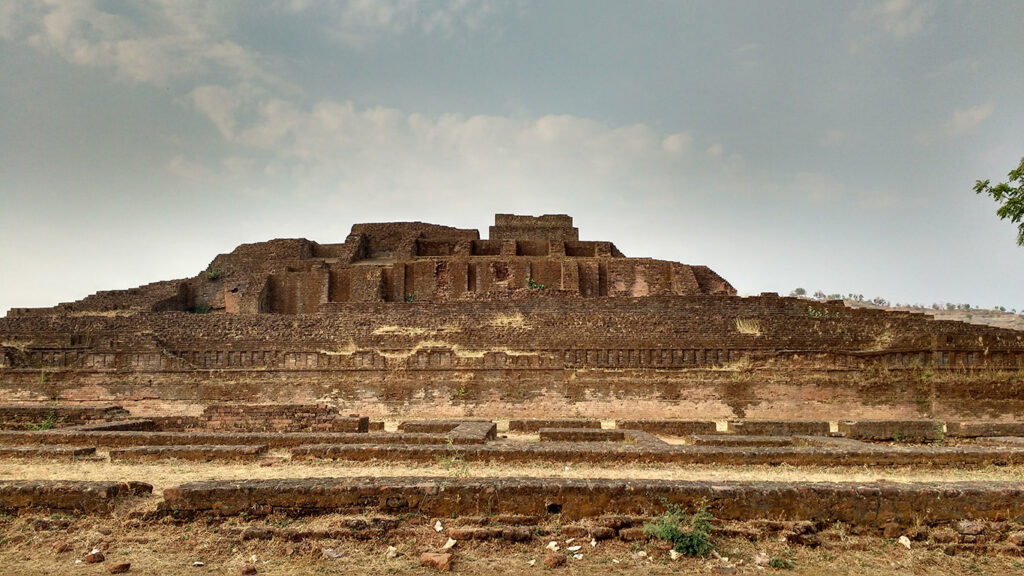
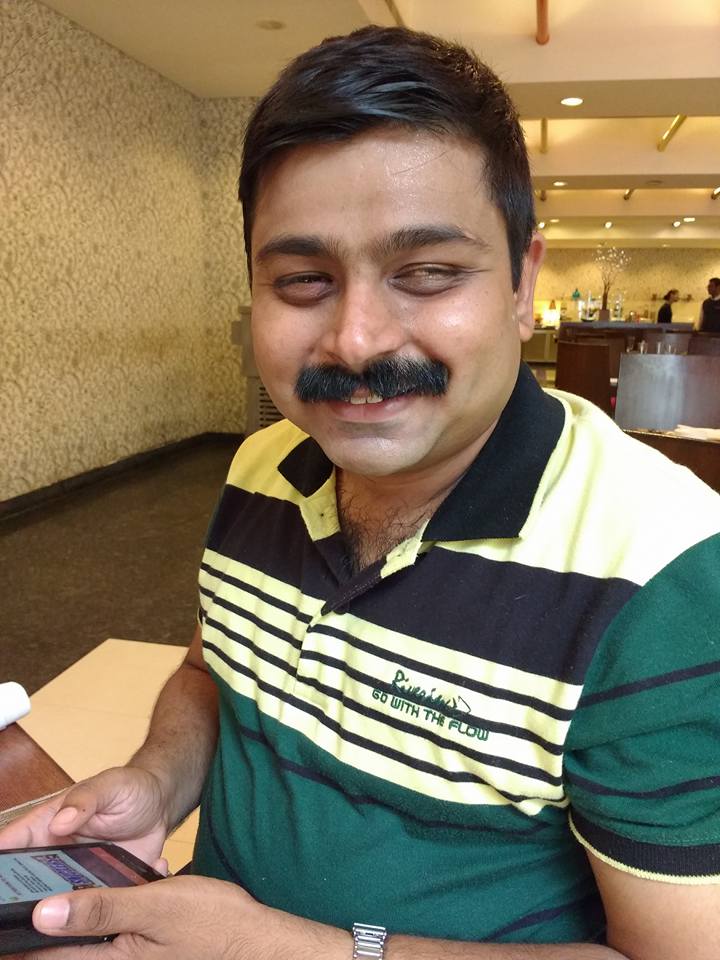 [/column]
[/column]